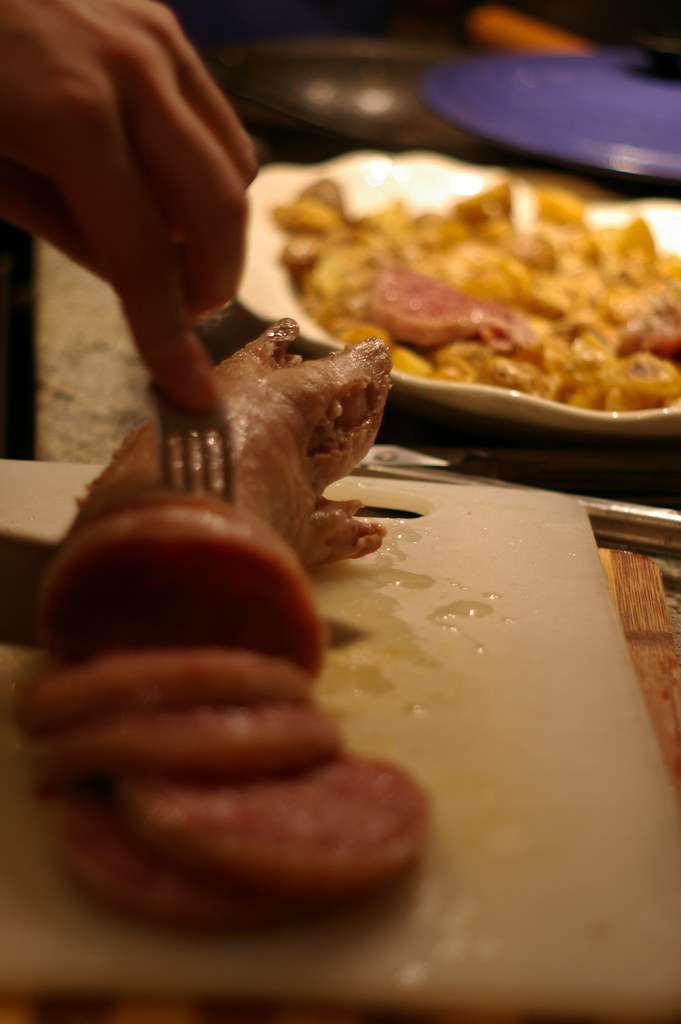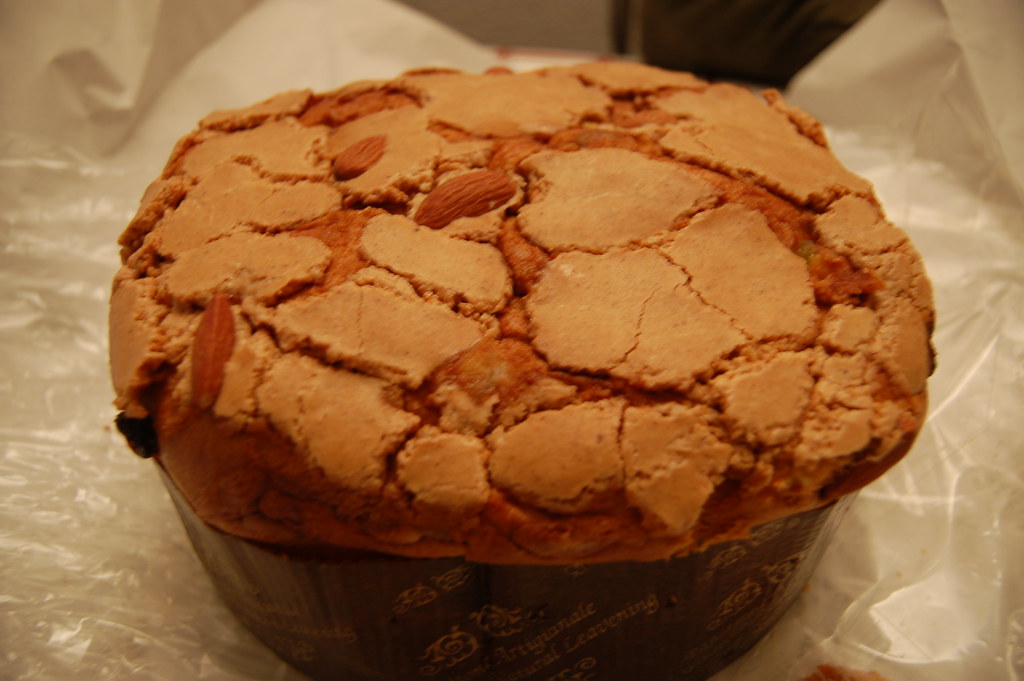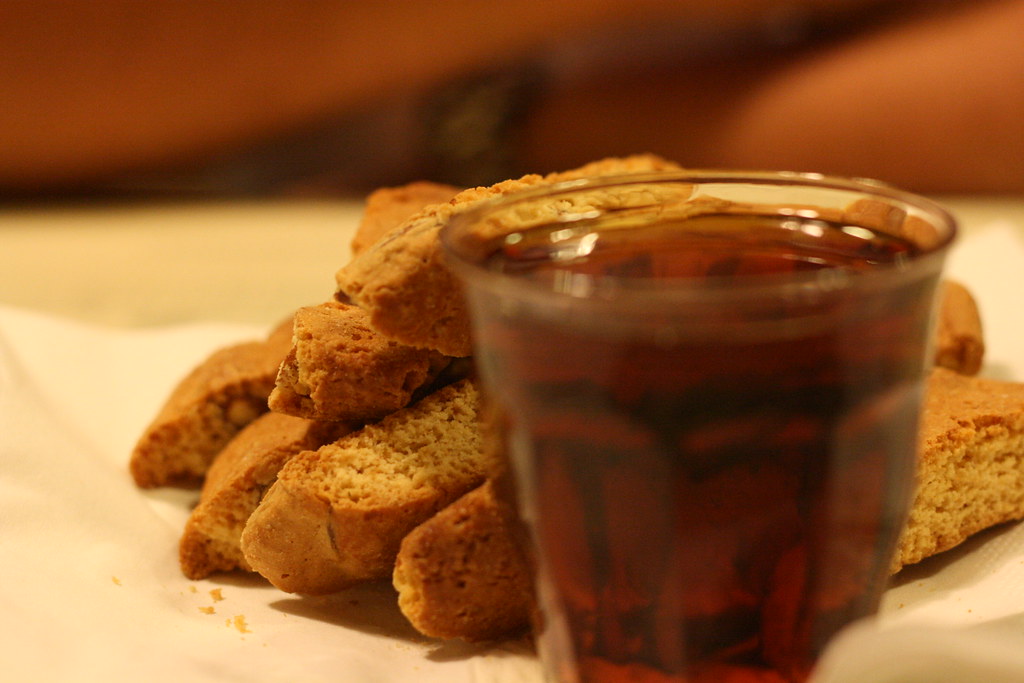There are few things more magical than strands of twinkle lights strung between Italian strade, and few things more delicious than Florence’s festive eats. So, in attempts to curb my nostalgic benders of scrolling through hours of #florencelights on Instagram, I have decided to focus on eating and cooking my way through the season like a true Florentine. But with only one week until Christmas, I have some serious chowing down to do!
Zampone
When it comes to the salami/sausage family, I think the world generally agrees on a ‘don’t ask don’t tell’ policy. Zampone, however, is a bit more in your face, as the casing is the pig’s lower leg (hoof included) itself. This flavor-packed limb is typically served over lentils, especially on New Year’s. These lovely limbs will be filling grocery store shelves in no time this season. Most Italians buy it from the grocery store pre-cooked. Remove the wrapping and simply boil for about 20 minutes. Serve hot.
Can’t help but envision a poor dismembered Porky Pig when eating your zampone? Try cotechino instead. It is very similar to zampone, but the casing is a bit easier on the eyes.

Fish
Contrary to my inclination to consume as many cured meats as I can on Christmas, Italians traditionally go for fish. The meal is rooted in the Catholic tradition of observing Christmas Eve as a day of fasting in preparation for the coming of Jesus Christ. Well, I think it’s safe to say that most of us have already started the birthday party Christmas Eve and have let the fasting go by the wayside. And, although the Italians cling to the tradition of fish, they aren’t exactly fasting either. In fact, many regions in Italy (mostly in the south) celebrate what is called The Feast of the Seven Fishes, in which 7, 9, 11, or even 13 fish dishes are served. Soooo I doubt anyone at the dinner table is left hungry. Nonetheless, don’t be surprised to find a fish where the turkey would go at the Christmas dinner table.

Panforte vs. Panettone
For dessert, there are two classics that will surely be found on every Florentine Christmas table come the 24th – panforte and panettone. These sister sweets are staples to the holidays. With similar names, they are understandably confusing to the average foreigner, but in actuality, they couldn’t be more different.
Panforte is strictly very Tuscan. Originating in Siena, Panforte translates literally as strong bread, thanks to the strong spices used. The consistency of panforte is much like fruitcake. Popularized during the crusades, weeping wives sent their husbands off to war with panforte packed in their bag. History claims it was to feed the soldiers, but I argue that it doubled as a weapon (one throw and panforte could definitely take out an infidel). Today we see candied cherries (red) and citron (green) mixed in the panforte for a dash of patriotism (or holiday cheer, you pick!).

Panettone, on the other hand, is a fluffy, delightful, sweet bread from Milan that is a staple in every Italian home for the holidays. Come December, colorful boxes of panettone (with ribbons for handles) are stacked in the windows of every grocery store just waiting for you!

Castagnaccio
Craving a dessert a little less pre-packaged? I recommend castagnaccio, a chestnut cake. Straying from typical Italian dolci, castagnaccio frequently features herbs like rosemary and fennel to balance out the sweet raisins and dried fruit. While spices vary, the staples of the cake remain chestnuts and pine nuts.
Click here if you’re feeling ambitious and want to give it a go!

Cenci
Whoa, whoa, whoa – I know what you’re thinking. Cenci is for Carnivale. True, but let’s not pigeon-hole this one. These delicately-fried and sugared bits of heaven come out to play during the Christmas season, as well. In particular, these tasty treats await the arrival of La Buffana on the Epiphany (I guess this Christmas witch prefers cenci and Vin Santo over cookies and milk).
I don’t trust myself to fry anything, but if you’re feeling adventurous, follow these few easy steps!

Cantucci
Finally, my favorite. Cantucci and biscotti are essentially synonymous. These sweet, dry cookies vary in flavor and type, but are typically infused with a delectable almond extract. When served in the mornings, they are perfectly complimented by a cup of coffee or tea. In the evening, after a meal, Italians use a strong dessert wine called Vin Santo to aid in downing these crumbly cookies.
Well, my tummy is now growling, and I am blaring Pavarotti’s Adeste Fideles on my Spotify. Time to hit the kitchen! Buon Appetito!

I wish all of you the most magical Christmas season and eat, eat, eat your heart out!

